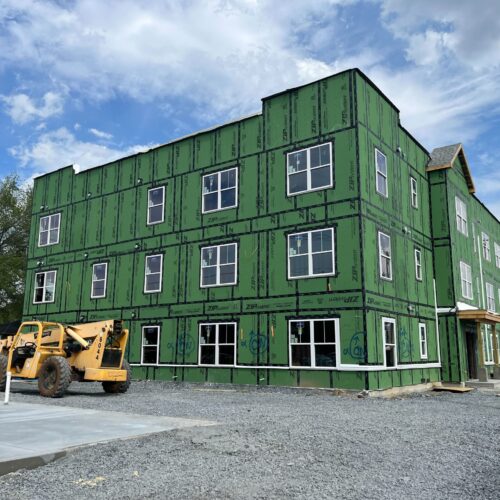This Second Chance Month, The Council of State Governments Justice Center staff asked governors from states across the country why reentry is important to them and the communities they govern. Below, find North Dakota Governor Doug Burgum’s reasons why #ReentryMatters.
What does reentry mean to you?
A successful transition from prison means attaining a basic level of well-being that allows individuals to become members of the community with dignity, fulfillment, and the achievement of life goals.
It means an individual has been given the necessary tools and treatment to become a productive member of society and now has an opportunity to use these skills and resources to live a productive life.
It means someone is liberated from past choices and is able to take the opportunities they’ve been given and apply them to a new chapter of their life, becoming productive and healthy in their neighborhood.
And, most of all, it’s a collaborative effort to return individuals to their families and communities. We can accomplish this by preparing individuals through effective rehabilitative programming; proactively planning to release them to supportive, prosocial, sober environments; and connecting with local stakeholders to increase opportunities for stable housing and employment.
In past decade, what progress have you seen in your state regarding reentry?
North Dakota has improved processes around reentry by assuring that individuals have an ID upon release; increasing supportive housing opportunities through use of reentry centers; providing sober living houses and other housing options, such as F5 and Redemption Road; and supplying a 30-day prescription for medications and working to schedule follow-up appointments.
We’ve also been holding second-chance job fairs, increasing work release opportunities, and expanding community behavioral health services for people on probation and parole through Free Through Recovery, among other things. This is all in addition to signing legislation to “ban the box” to reduce barriers to employment.
North Dakota has also seen a philosophical shift occurred in how parole is leveraged in North Dakota. It shifted from a philosophy based on who is deserving of parole to a philosophy based on how we leverage parole as an incentive for engaging people in a change process and guiding them through the reentry process.
Education has also become a greater emphasis at the Department of Corrections and Rehabilitation (DOCR), where the diploma/graduation success rate has improved over time, thereby statistically reducing recidivism. A workforce resource coordinator position was developed within DOCR to bring in more job-specific skills training and community-based programming to not only enhance the programming, but also to invigorate the models we’ve adapted. Dynamic security has created a safer environment for residents to learn about making more prosocial choices and to provide them with affirmation for healthy choices. All of these items make for a more successful, enhanced reentry environment.
Lastly, through the efforts of our state agencies and First Lady Kathryn Burgum, we’ve increased awareness that addiction and serious mental illness are chronic diseases that require ongoing involvement in supports versus an acute care model.
What issue(s) related to reentry do you want to address in 2019:
We still have a lot to work to provide this population with the skills that match our state’s workforce needs. Timely access to higher education and stable, affordable housing continue to be a challenge for many of our returning citizens. Affordable health care and access to behavioral health services are also challenges.
We must do a better job of educating the public that incarcerated individuals are future members of our communities, and that everyone can play a role in helping these individuals make a successful transition.
Developing stronger partnerships with the North Dakota business community will improve job readiness and community reentry. A statewide transitional housing network that could be accessed by local and state correctional facilities would facilitate transition to sober and supportive living opportunities for individuals.
We need to ensure that people have access to the programs they are eligible to receive, such as Medicaid, and improve the process of getting them access.
We aim to continue building supports in the prevention, early intervention, and recovery realms of the continuum of care, particularly in the western part of the state. We also seek to improve access to residential or inpatient services and to address behavioral health workforce shortages.
Why should an average citizen in your state, not necessarily connected to any part of the criminal justice system, care about reentry?
People released from the criminal justice system become our neighbors when they reenter our communities, and it’s in everyone’s best interest that they are well-positioned to become productive members of the community with dignity and opportunities to succeed. North Dakota has more than 14,000 online job openings—and an estimated total of 30,000 open jobs—and workforce is the number one barrier to economic growth. Successful reentry strengthens our communities and our workforce, improving the overall quality of life in North Dakota.
If you could say something directly to a person on the verge of leaving prison or jail and reentering society, what would you tell them?
Remember that people are supporting you and services are available to you. This is an opportunity to build a better life for yourself and everyone around you, and the state wants to see you succeed.
 Zero Returns to Homelessness Initiative Launches Nationally, with Pennsylvania Leading the Way
Read More
Zero Returns to Homelessness Initiative Launches Nationally, with Pennsylvania Leading the Way
Read More
 New Hampshire Continues Justice Reinvestment Effort to Improve Conditions for People Who Are High Utilizers of Criminal Justice and Behavioral Health Systems
Read More
New Hampshire Continues Justice Reinvestment Effort to Improve Conditions for People Who Are High Utilizers of Criminal Justice and Behavioral Health Systems
Read More














